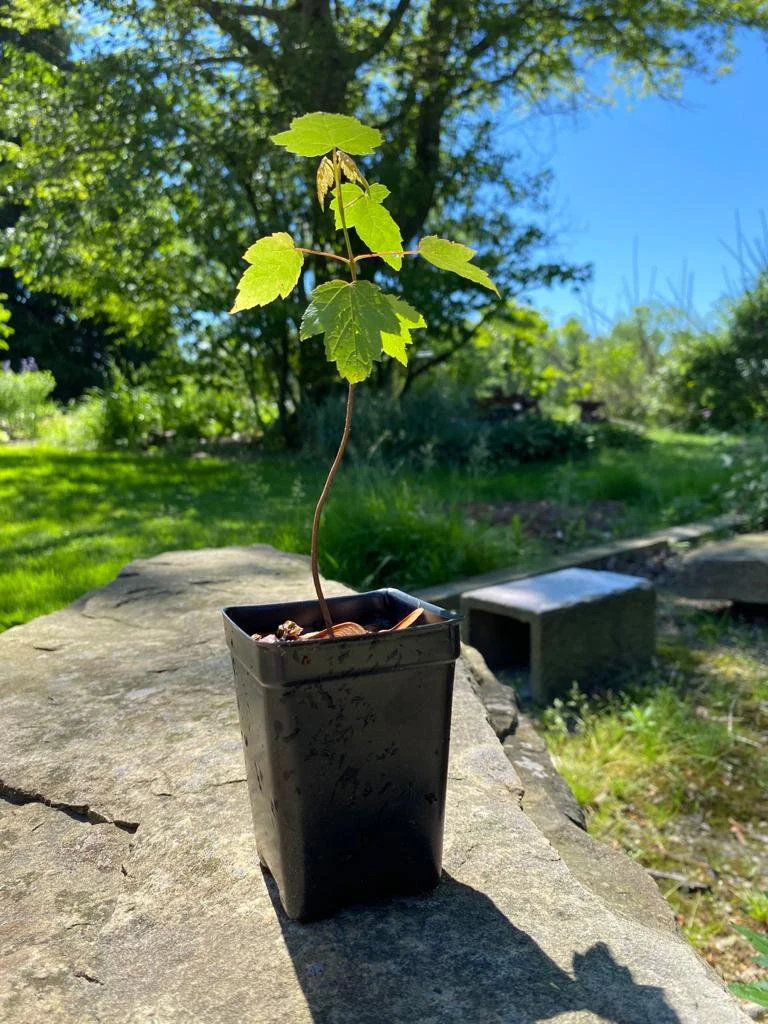The red maple (Acer rubrum) is one of the most popular trees in North America due to its brilliant red foliage, adaptability, and fast growth rate. Whether planted for ornamental purposes, shade, or ecological benefits, nurturing red maple seedlings requires careful attention. This guide provides a detailed overview of the essential aspects of caring for red maple seedlings, including site selection, planting techniques, watering, fertilization, pruning, and pest management.
1. Understanding Red Maple Seedlings
Red maple trees are known for their ability to thrive in various soil types and climates. Their seedlings, however, require specific conditions to establish strong root systems and achieve healthy growth. Understanding their needs is crucial for ensuring their successful development.
Growth Characteristics
Red maple seedlings typically grow at a moderate to fast rate, adding up to 24 inches per year under optimal conditions. They have a fibrous root system that requires moist, well-drained soil to thrive. While red maples are adaptable, young seedlings are more vulnerable to environmental stressors.
Climate and Hardiness
Red maples are native to eastern North America and are hardy in USDA zones 3 to 9. They can tolerate both wet and dry conditions but prefer moist environments. Seedlings require protection from extreme cold and heat in their early stages.
2. Site Selection and Soil Preparation
Choosing the right location is crucial for the healthy growth of red maple seedlings. Several factors must be considered, including sunlight exposure, soil type, and drainage.
Sunlight Requirements
Red maples grow best in full sun to partial shade. Seedlings should receive at least six hours of direct sunlight per day to promote strong growth and vibrant foliage.
Soil Preferences
Red maples can grow in a variety of soil types, including clay, loam, and sandy soils. However, they prefer slightly acidic to neutral soil with a pH between 4.5 and 6.5. Before planting, conduct a soil test to determine pH levels and nutrient availability.
Drainage Considerations
While red maples tolerate wet conditions better than many other tree species, prolonged waterlogging can lead to root rot. Ensuring proper drainage by planting in raised beds or amending heavy clay soils with organic matter can improve root health.
3. Planting Red Maple Seedlings
Proper planting techniques are essential for the successful establishment of red maple seedlings.
Timing of Planting
The best time to plant red maple seedlings is in early spring or fall when temperatures are mild, and moisture levels are favorable.
Spacing and Depth
Seedlings should be spaced at least 10 to 15 feet apart to allow room for growth. The planting hole should be twice as wide as the root ball but no deeper than the seedling’s original growing depth.
Mulching
Applying a 2- to 3-inch layer of mulch around the base of the seedling helps retain moisture, regulate soil temperature, and suppress weeds. However, avoid piling mulch against the trunk to prevent rot.
4. Watering and Moisture Management
Red maple seedlings require consistent moisture for healthy root development.
Watering Frequency
Newly planted seedlings should be watered deeply once or twice a week, depending on rainfall levels. The soil should be kept moist but not soggy.
Drought Protection
During dry spells, increasing watering frequency and using mulch to retain soil moisture can help prevent drought stress.
5. Fertilization and Soil Nutrition
Proper fertilization ensures that red maple seedlings receive the necessary nutrients for healthy growth.
When to Fertilize
Fertilization should be done in early spring and late summer. Avoid over-fertilizing, as excessive nutrients can lead to weak growth.
Choosing the Right Fertilizer
A balanced fertilizer with an N-P-K ratio of 10-10-10 or 12-4-8 is suitable for red maple seedlings. Organic alternatives, such as compost or well-rotted manure, can also enhance soil fertility.
6. Pruning and Structural Maintenance
Pruning is essential for shaping young red maples and promoting strong branch structure.
When to Prune
Prune seedlings in late winter or early spring before new growth emerges. Avoid heavy pruning during the growing season.
Proper Pruning Techniques
- Remove dead or damaged branches.
- Trim competing leaders to encourage a single dominant trunk.
- Thin out overcrowded branches to improve air circulation.
7. Pest and Disease Management
Protecting red maple seedlings from pests and diseases ensures their long-term health and survival.
Common Pests
- Aphids: Cause leaf curling and stunted growth. Control with insecticidal soap or natural predators like ladybugs.
- Scale Insects: Appear as small bumps on stems and leaves, leading to weakened trees. Use horticultural oil to manage infestations.
- Caterpillars: Can defoliate young trees. Handpick or apply biological controls like Bacillus thuringiensis.
Common Diseases
- Verticillium Wilt: A fungal disease that causes leaf wilting and branch dieback. Prevent by ensuring proper drainage and avoiding overwatering.
- Anthracnose: Causes brown spots on leaves. Improve air circulation and remove infected foliage to control the spread.
8. Winter Protection and Seasonal Care
Young red maple seedlings require extra care during winter months to prevent cold damage.
Mulching for Insulation
Applying a thick layer of mulch around the base helps insulate the roots from freezing temperatures.
Wrapping the Trunk
Using burlap or tree wraps can protect young trunks from winter sunscald and frost cracks.

Watermelon Peperomia (Peperomia argyreia) Care Guide
Introduction Watermelon Peperomia (Peperomia argyreia) is a delightful houseplant beloved for its unique, showy foliage. Named for its striking leaves that resemble watermelon rinds—oval-shaped with silver and dark green stripes—thisRead More
Waikiki Elephant Ear (Colocasia ‘Waikiki’) Care Guide
Introduction The Waikiki Elephant Ear is a showstopping tropical plant prized for its striking foliage. A cultivar of Colocasia esculenta, ‘Waikiki’ stands out with large, heart-shaped leaves in deep green,Read More
Violet Primrose (Primula spp.) Care Guide
Introduction to Violet Primrose The violet primrose is a delightful early-blooming perennial belonging to the Primula genus, which includes over 500 species. Known for their cheerful blossoms and delicate foliage,Read More
Violet Hollyhock Care Guide
Introduction to Violet Hollyhock (Alcea rosea) Violet Hollyhock, scientifically known as Alcea rosea, is a striking perennial flower that is beloved by gardeners for its tall, stately stems and large,Read More
Vinca ‘Wojo’s Gem’ Care Guide
Vinca ‘Wojo’s Gem,’ also known as Periwinkle or Madagascar Periwinkle, is a popular ornamental plant admired for its attractive, glossy foliage and vibrant flowers. It is a hybrid variety ofRead More
Care Guide for Variegated White Lighting Crown of Thorns (Euphorbia milii)
The Variegated White Lighting Crown of Thorns (Euphorbia milii), also known as the Crown of Thorns plant, is a stunning, hardy succulent that produces vibrant flowers and can thrive inRead More
Proudly powered by WordPress



